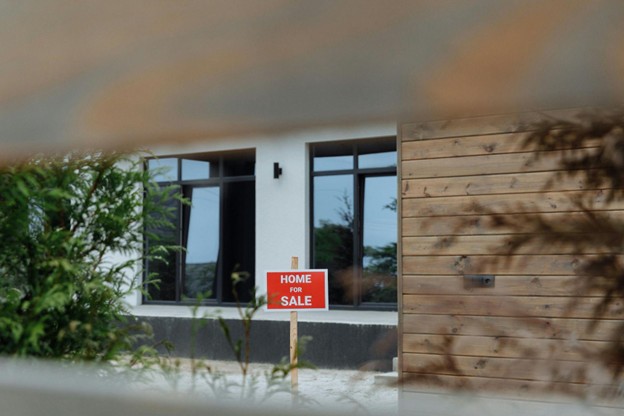The Smart Seller’s Checklist
 Getting ready to sell your home can feel like stepping into a spotlight—you know buyers are coming, and suddenly every chipped baseboard and squeaky hinge feels like a liability. But not every flaw needs fixing. And not every project pays off. The art lies in knowing which updates increase buyer trust and which ones just eat your budget. The good news? Most of the highest-ROI repairs are inexpensive and surprisingly simple. Let’s walk through the smartest choices you can make before listing—repairs and upgrades that add value, reduce friction, and help your home feel move-in ready from the curb to the inspection report.
Getting ready to sell your home can feel like stepping into a spotlight—you know buyers are coming, and suddenly every chipped baseboard and squeaky hinge feels like a liability. But not every flaw needs fixing. And not every project pays off. The art lies in knowing which updates increase buyer trust and which ones just eat your budget. The good news? Most of the highest-ROI repairs are inexpensive and surprisingly simple. Let’s walk through the smartest choices you can make before listing—repairs and upgrades that add value, reduce friction, and help your home feel move-in ready from the curb to the inspection report.
Image via Pexels
Selling isn’t about dazzling—it’s about de-risking. A buyer walking through your home is looking for reasons to say yes and reasons to walk away. Your job is to reduce the latter without overspending or guessing. Focused fixes—not full-blown renovations—do more to reassure buyers than any trendy light fixture or granite countertop ever could. And the real win? Many of the most impactful changes are small enough to finish in a weekend, subtle enough not to draw attention, and smart enough to help you close faster and cleaner. This checklist doesn’t just help you impress—it helps you move.
Make the First Impression Count
They don’t call it curb appeal for nothing. Most buyers decide how they feel about a home within the first few moments of seeing it—long before they step inside. A neglected exterior plants seeds of doubt: What else hasn’t been maintained? You can boost curb appeal fast by addressing visual noise—peeling paint, patchy grass, cracked walkways. Even small updates like new house numbers or a clean, modern porch light make a home feel current and cared for. If the front of the house signals warmth, ease, and low maintenance, buyers are more likely to approach the rest of the tour with optimism rather than skepticism.
Consider this: the exterior sets a buyer’s emotional baseline. You don’t need to install custom landscaping or new siding to make a strong impression. Sometimes, simply pruning bushes, touching up the trim, and planting some annuals in clean beds is enough to create a sense of order and freshness. This creates mental momentum—the buyer begins looking for reasons to love the house instead of reasons to walk away.
Put on a Fresh Coat
Paint is one of the least expensive ways to make a space feel clean and updated—but only if you use it strategically. Skip bold colors or glossy finishes unless you’re covering cabinets or trim. In most rooms, soft neutrals allow light to bounce while keeping things feeling open and flexible. It’s not about making a statement. It’s about calming the eye and giving the space back to the buyer.
That’s why repainting before selling works so well: it delivers immediate visual payoff, lowers friction, and reduces buyer uncertainty. Think beyond aesthetics—fresh paint suggests good upkeep. It hints that walls are free of hidden water damage or smoke residue. When done well, it makes even older homes feel like clean slates. If you only have time to tackle a few zones, prioritize the entry, hallways, and any room with faded or overly specific color schemes. These subtle resets offer some of the best return-on-investment across all pre-sale efforts.
Plumbing Fixes and Upgrades
Buyers might not ask about backflow preventers outright, but that doesn’t mean they don’t care about water safety—especially in older homes or regions with known supply issues. Plumbing upgrades are often invisible to the eye but meaningful to savvy buyers and inspectors alike. Something as simple as a backflow preventer, which keeps potentially contaminated water from reversing into your home’s supply, can make a difference.
More importantly, it sets a tone: this home wasn’t just spruced up, it was cared for across the board. While not every home requires this device, adding or updating one is a quick and relatively low-cost move. It’s also an easy way to show buyers (and appraisers) that safety and maintenance weren’t an afterthought. If you’re wondering why backflow preventers are important, it’s because they offer high-impact peace of mind in a part of the house most people never think about—until something goes wrong.
Easy Upgrades in the Kitchen and Bathrooms
There’s no need to rip out cabinetry or install a waterfall island. Most buyers don’t expect high-end finishes unless your neighborhood justifies it—and even then, it rarely recoups the cost. What buyers do expect are clean, functional, neutral-feeling kitchens and bathrooms that show signs of care. Dated or overly ornate fixtures can often be swapped in under 30 minutes with something simple and modern.
That’s the kind of easy kitchen and bath upgrades you should target: subtle, accessible changes that feel recent. Replace crusted or yellowing caulk. Change drawer pulls. Add a soft-close toilet seat and a framed mirror to the bathroom. These touches aren’t just cosmetic; they frame your home as move-in ready. No buyer wants to inherit a long fix-it list—your job is to shorten it wherever you can. You don’t need a total refresh. You need emotional clarity: This place is already good enough to live in.
Don’t Overlook Behind-the-Scenes Repairs
Even if buyers don’t see a water heater or crawlspace, their inspectors will. And what they find often shapes the negotiation more than any staging choice. That means attending to the invisible is just as important as the visible. Replace any exposed electrical wiring in garages or basements. Check for rust on plumbing connections, drain lines, and HVAC units. You may not have to replace major systems, but if they’re functioning poorly or visually neglected, it undermines confidence.
A simple walkthrough can reveal easy fixes. For example, that shaky deck step you’ve lived with for years? It signals structural apathy. That outlet that only works if you wiggle the plug? Electrical hazard. These types of issues are exactly the kind of repairs to prioritize before listing your home to avoid unwanted surprises. Most of them are fixable in a weekend. They show buyers that you’re not just staging a space—you’ve genuinely maintained it.
Tackle Issues That Inspections Reveal
No matter how lovely the tour goes, the inspection is where many deals go sideways. What you skip now could come back as a costly demand later. Thankfully, most major red flags are predictable: slow drainage, inadequate insulation, aging roof elements, faulty GFCI outlets, and questionable attic ventilation. These are not necessarily expensive to correct, but they loom large in the buyer’s mind when they appear in an inspection report.
To stay ahead of the curve, focus on addressing the basics. If you’ve had roof leaks in the past, patch the area and document it. Secure handrails. Replace broken window locks. Keep a record of any professional maintenance you’ve had done in the last year. The more transparent and proactive you are, the less leverage the buyer has to lower their offer or delay the closing. A good guide for this process is reviewing a list of common inspection red flags—use it as a checklist before the buyer brings in their own.
Avoid Upgrades That Don’t Pay You Back
It’s tempting to chase big upgrades, especially when you’ve been watching home design shows or scrolling real estate sites filled with staged perfection. But not every improvement helps you sell faster—or for more. Some actually create friction. A wine fridge, built-in speakers, or high-end stove might be appealing to a narrow segment of buyers, but if they don’t match the tone of the rest of the home, they can feel disjointed or overdone.
The key is to resist emotional overreach. That means ignoring the urge to replace all your flooring, reconfigure your laundry room, or invest in designer faucets if your goal is simply to sell. Stick to updates that create neutrality, flow, or functionality—not personalization. You’ll save time and money, and avoid post-inspection regrets. Many sellers waste money on flashy projects that don’t increase value; focusing instead on essential fixes helps you avoid the kind of home updates that aren’t worth doing when preparing your home for sale.
The Return on Effort
Selling a home is about more than ROI. It’s about what you leave behind. Buyers don’t remember everything they see—but they absolutely remember how a house feels. Was it cared for? Was it calm? Did it look like someone had loved it well, but not held onto it too tightly? That’s what the right upgrades and repairs convey. It’s not about perfection. It’s about rhythm—small signals of care that carry through from room to room.
And here’s the deeper truth: buyers are human first. They walk into a home looking not just for features, but for relief—for confidence, for a sense of “yes.” When you skip overkill and double down on trust-building details, that yes gets easier to find. Think of your repairs not as marketing but as storytelling: each fix says, I’ve respected this place, and you’ll be safe here too. That’s the kind of signal that makes people put in offers quickly, cleanly, and often above asking.
Article by John Dunbar
Discover the difference a dedicated REALTOR® can make in your real estate journey by visiting Cal Nevada Real Estate today!

You must be logged in to post a comment.